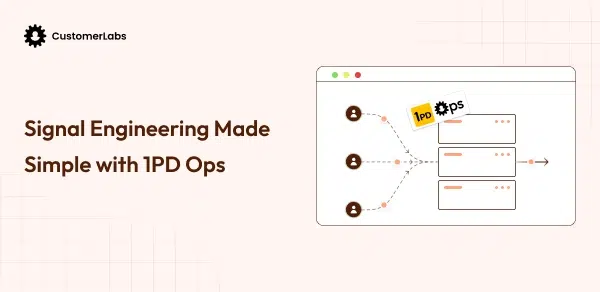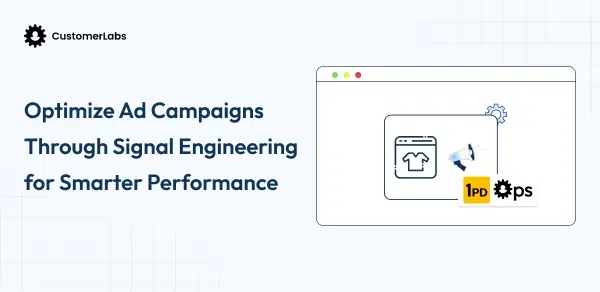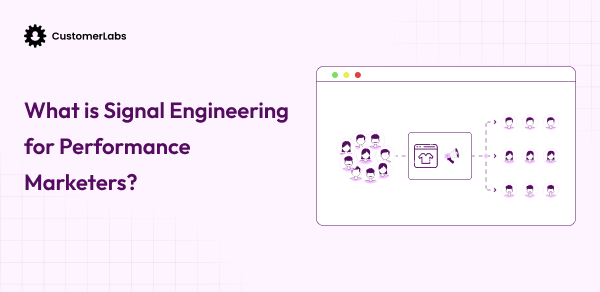By: A journalist in the room
Recently, I had an opportunity to attend the 1PD Ops Performance Marketing Summit, which was held at Bangalore on 24th August 2025. This summit was an extremely valuable added session, with the appearance of 5 important pillars of the performance marketing industry in India.
With a gathering of 200 plus performance marketers in and around India, the summit was mind-blowing and insightful.
So I thought I would make a blog out of it and record what I thought was new and interesting at the summit.
This one piece stood out for me. The speaker, Vishnu Vankayala, is the Founder and CEO of CustomerLabs 1PD Ops. And this blog will be all about it.
Disclaimer: It is purely my experience and observations of the Summit.
AI Taking Over Ad Platforms & Marketers Losing Control Over Campaigns
Vishnu jumped right into the session to emphasize the fact that how marketers are losing control. He started by saying,
“We had a lot of control in terms of what we can do and how we run the campaigns and what kind of deliverables we want and eventually we know who to target exactly
And I have seen a lot of Facebook videos of a lot of people coming up with interest-based targeting; this is what you should go after. If you’re looking at if you’re looking to sell, let’s say luxury brands, then you create an interest-based group, and then you go after targeting it; it’s gone right.”
He also went on talking about how marketers today are planning or executing strategies for their campaigns to gain revenue for the business with a small example.
The example, the campaign goal was to capture new customers. But the ads spent will be spent on existing customers. But they cannot switch off targeting the existing customers, because then the ROAS will take the hit.
With a funny note, he compared marketers to stock traders glued to their dashboards, refreshing numbers every morning like their lives depended on it.
I quote,
“You check ROAS, CAC, AOV… and some days it feels like your entire strategy lives and dies with that refresh. That’s how most of us have gone bald, including me,” he said.
The room burst into laughter but it wasn’t the funny kind; it was the “ouch, that’s true” kind.
Next, he jumped into talking about a comment made by Mark Zuckerberg.
What did Mark Zuckerberg say? WTF?
Vishnu was speaking for the performance marketers, standing in their shoes. Felt more like a union leader, just kidding.

If Mark is going to do this, then what about the performance marketers?
I am damn sure that, after this exact quote, every marketer in the summit was terrified inside. Are we going to be replaced by AI, too?
(I was thinking it, like how content writers lost when AI came into the picture.)
I have to mention this: there was only this one slide after this, which said, “Mark Baba, ROAS please Baba” it brought extreme laughter. Ironically, that’s exactly what’s happening.
Every marketer today feels like “there is nothing I can do.”
“But there is a lot,” said Vishnu, and diverted the crowd’s attention towards “Signals.”

The Power of Signals to Gain Back Control Over Campaigns
I loved how he smoothly brought in the concept of data by calling out to signals.
He said “ the ball moves from their court to your court, only when you structure the data that you send to these ad platforms.”
First-party Data is the one that produces signals that hold power.
We see it as “Data”, the platforms sees it as “Signals”
The moment the data is structured, the platforms get trained better with the signals.
Vishnu brought in a comparison of ad platforms with Chatgpt, to bring in more context so that the marketers can relate better.
He asked the crowd, “How do you control the answer that you want from ChatGPT? What is the term for it?”
The crowd answered, “Prompts, Better Prompts, Prompt Engineering.”
Then, he explained exactly how ad platforms work. For ChatGPT to work better, one gives better. Likewise, when ad platforms need to work better, you give better signals.
A Real Experiment: Proof for Signals is Power
I knew what he was talking about. Because I was there when it happened.
So he explained by giving an example from the ads that we ran for the very summit he was talking about.
The ads team wanted to optimize the ads for page scrolls because we did not have any purchases initially to send as a conversion event.
The campaign started with page scrolls as an objective. Here comes the bomb; around 50,000 got spent on the age group above 55.
This was a broad campaign, A+SC. Vishnu was extremely angry at the team for missing out.
But how did the campaign get fixed? One change, not the creative, not the targeting
Change the conversion event: Purchase
In the next two days, the campaign’s targeting shifted to 25-35 age groups.
(It’s true and I can vouch for it. But never imagined he would say this as an example in the Summit)
Next, he moved on to explaining why the signals are powered by demonstrating how the AI model learns.

How Meta’s AI Models Learn?
Vishnu brought in papers released by Meta to make the crowd understand better.
Meta’s advertising system is powered by machine learning models that constantly learn from events happening both inside and outside the platform.
Events inside Meta apps: Every interaction is treated as an event, seeing an ad, clicking it, spending time on it, liking, commenting, or sharing. These actions help the system understand what people pay attention to.
Events outside Meta apps: When a user leaves Facebook or Instagram and visits a website, actions like page views, product views, add-to-carts, and purchases are also treated as events.
The model doesn’t just look at a single event; it studies the sequence of actions. For example, a person may:
- See an ad.
- Like it after the second or third exposure.
- Finally visit the website and make a purchase.
This order of events (the sequence) is more powerful than one isolated signal. The system learns patterns of behavior that indicate whether someone is likely to engage or buy.
Meta’s primary job here isn’t to guarantee business results; it’s to show the most relevant ads and content to users so they keep engaging. By aligning your data signals with how their system works, you give the model the right “clues” to find your best audience.
Now I understood how I saw that instagram ads about Vilvah just after visiting the site once.
Next up, one part of Vishnu’s talk really caught my attention; he called it the Death of Identity.
Identity is The Backbone of Signals
He explained it in a way that hit home for every performance marketer in the room.
The idea was simple: Meta’s algorithm can only learn as much as the data we send it. The moment that data breaks, the entire system collapses.
And this is exactly what happened when privacy waves started rolling in: GDPR in Europe, Apple’s iOS 14 ATT update in 2021, and soon, India’s DPDP Act. All of them put strict controls on how user data is tracked.
Why does this matter so much? Because when a user does something on your site, like viewing a product or adding to cart, that event needs to be tied back to their profile (Identity).
Without that identity match, the algorithm doesn’t know who did it.
Vishnu gave a powerful example. He showcased a brand where Shopify is powering top-funnel events (page views, product views) while a one-click checkout tool called Gokwik powers your bottom funnel (add to cart, purchase).
What happens?
One system calls the user 123 who made pageview and productview; the other calls them XYZ, says made addtocart, initiatedcheckout and purchase.
The journey splits into two broken profiles. Identities break. The algorithm is left confused.

The Fix? Broken Identities Stitched With External IDs
Here’s the official documentation external ID’s by Meta

When a user clicks an ad, Meta generates an FB Click ID. If you capture that and map it to your own External ID, just like linking a PAN card to Aadhaar, you can stitch every event back to the same user. That keeps the journey intact from the first click all the way to purchase.
Vishnu closed this part with a line that stuck with me: “Identity is the backbone of signals. Break it, and the algorithm is blind. Preserve it, and you stay in control.”
After this, he dropped the EMQ bomb
EMQ 9.2 – Don’t Be Very Happy About it !!!
WTF, right? (That was my mind voice too.)
Then he said, “of course, be happy about it. But that’s not the goal you will want to achieve.”
Why he said this: Because the EMQ score is a score for a single event. But when it comes to training the ad algorithms, you need sequences of all the events from top funnel to bottom funnel and it has to match with the identity of the user.
He went a bit technical after this with the fix, but let me break it down for you.
To track all the events without any signal blocker,
You have to set first-party cookies using 1P Domain tracking that happens on the server side.
This way signals don’t break. It’s a forever solution.
Through this, you will be able to track the users, even when they are anonymous and store it as a singular identity until they reveal themself.
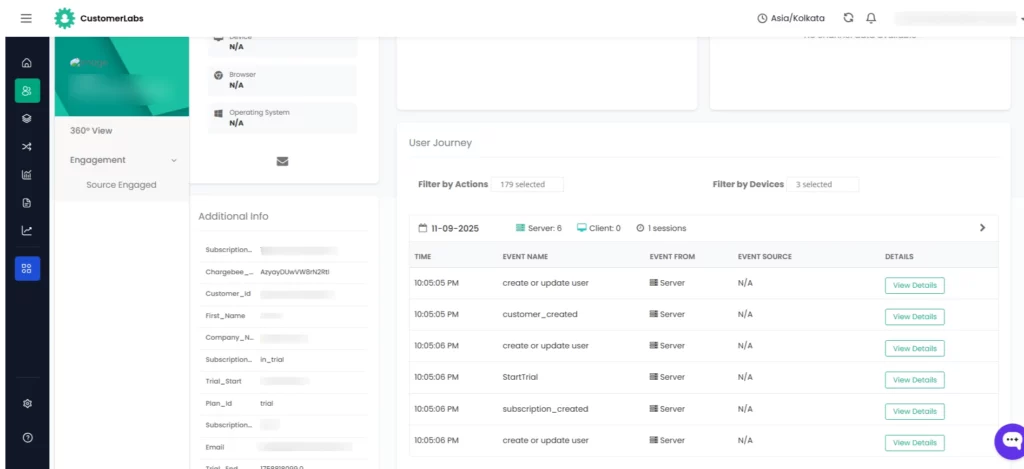
Here’s the catch: he said, “Until here it’s all about identity, but if you don’t convert them to signals, it’s not going to give you results.”
That brings us to the next section.
How ML Models Learn – Explained using Dog-Dog theory
Another moment from Vishnu’s talk that stood out for me was his analogy of how machine learning models actually learn, which he called the Dog-Dog Theory.
He broke it down in the simplest way. A model doesn’t think like us. If you show it a picture, it can only say “animal” or “not animal.” That’s level one. Train it further, and it might say “animal” or “human.” Better, but still limited.
Now imagine showing the model two pictures, one of a dog and one of a cat. To us, the difference is obvious. But the model, if poorly trained, will still output “animal, animal.” It makes sense at a high level, but it misses the nuance.
This is where the Dog-Dog problem comes in.
Look at the image above. If you keep training the model with only “dog,” then every new image you show it will come back as “dog, dog, dog.”
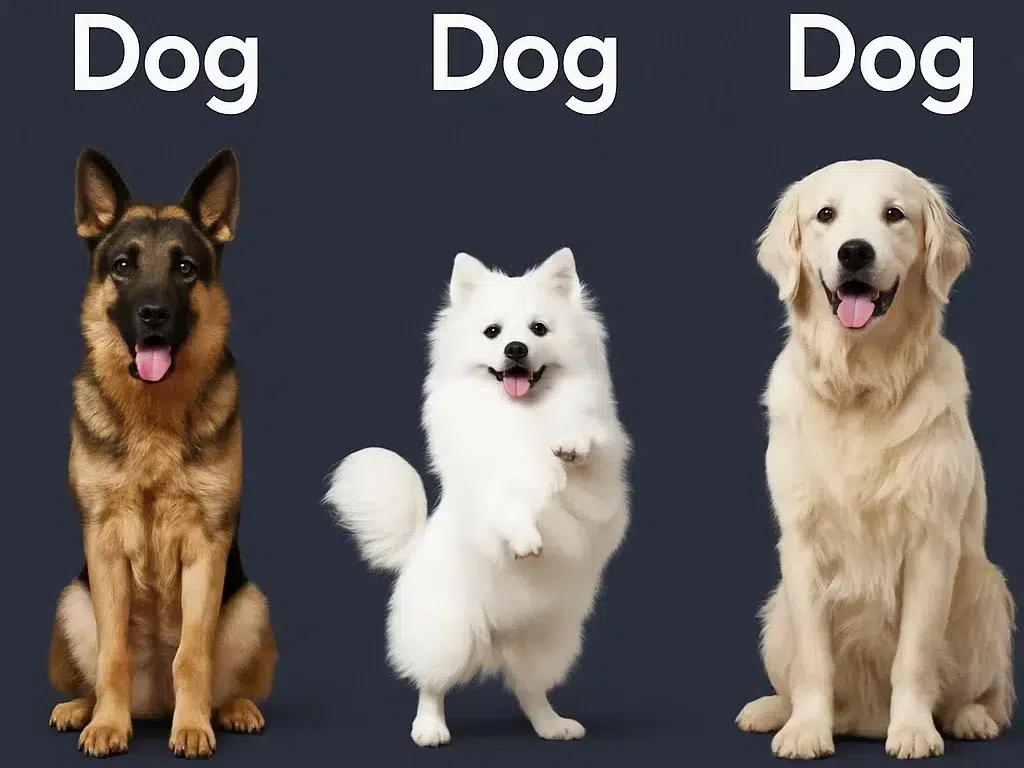
But as humans, we know not all dogs are the same. A German Shepherd is not a Pomeranian, and a Pomeranian is not a Labrador.
The lesson? Granularity matters. Instead of lumping everything under one broad label, feeding it “dog-dog-dog,” you break it down into categories that add context and meaning. You feed it “German Shepherd, Pomeranian, Labrador.” That’s how you gain control”
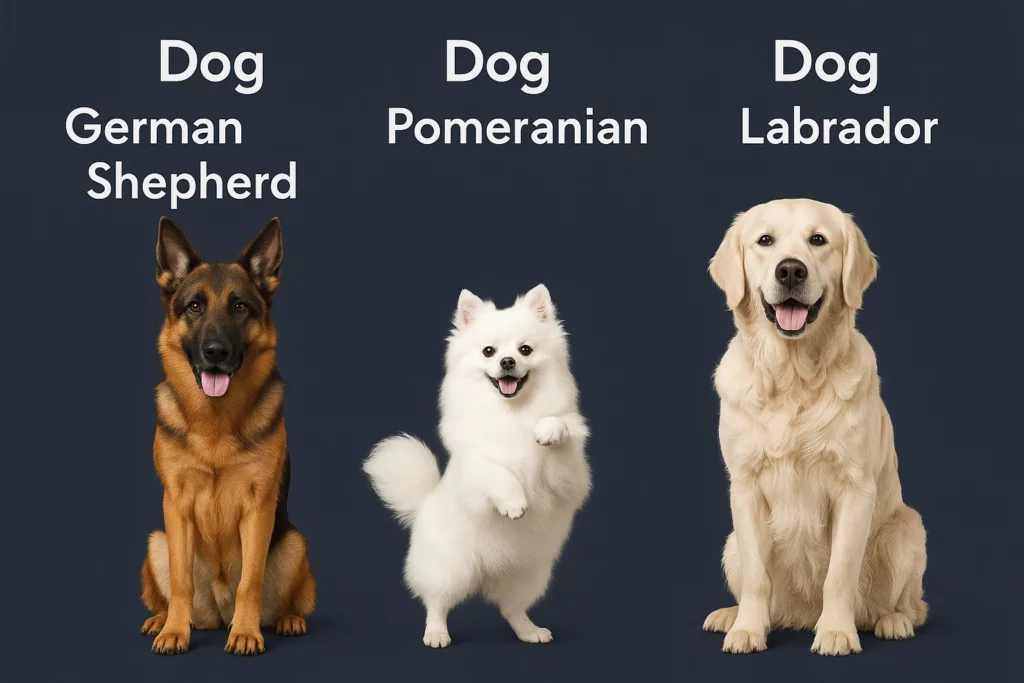
Vishnu tied this back beautifully to campaign optimization. When we optimize only for “purchases,” we’re making the same mistake as saying “dog-dog-dog.” We’re ignoring the fact that purchases come in different sizes, values, and categories.
Why not split them: low AOV, mid AOV, and high AOV? Or by product type: men’s, women’s, or kids’?
This practice of splitting and structuring signals is what Vishnu called “Signal Engineering.” It’s a concept that’s going to boom in the coming months. In his words, “you heard it here first.”
He gave a mantra to the marketer there to remember. “Whenever you go to optimize your ads, just remember: dog dog dog.”
And honestly, sitting there in the summit, I couldn’t help but think, this one insight alone could change how we run campaigns forever.
So, What is Signal Engineering?
“Signal Engineering means you take the raw events you already have: add-to-carts, checkouts, purchases and reframe them in a way the algorithm can learn faster and respond more intelligently.”
Case Study of Rare Rabbit: Won with Signal Engineering
When the marketers heard the brand’s name, everyone moved to their edge, waiting for the moment when Vishnu would drop that secret for success.
Vishnu opened the Rare Rabbit website, viewed a product and started with a question, “Now tell me what would be the event for this action?”
The crowd said, “pageview, productview.”
He nodded his head and went on explaining the story of Rare Rabbit
For context, Rare Rabbit had three different brands: men’s, women’s, and kids. Each had its own website, its own team, and its own way of running campaigns.
Last year, they decided to consolidate everything under House of Rare. But consolidation brought in a tricky problem: how do you structure signals when multiple product lines are involved?
If you treat all events the same, for example, sending a simple “product viewed” or “add-to-cart” across men’s, women’s, and kids’ collections, the algorithm doesn’t understand the difference. It’s the dog-dog problem all over again.
What Rare Rabbit did instead was smart. They split these events into custom ones. For example:
When a men’s product was viewed → RR Product Viewed
When a women’s product was viewed → RR Women Product Viewed
By creating distinct signals for each product line, they gave the algorithm clarity.
Instead of learning from one big bucket of “product views,” the model learned exactly which category was driving what behavior.
The result? The campaigns trained faster and optimized better, and Rare Rabbit had far greater control over how ad spend was allocated across categories. This was signal engineering in action and it worked.
Custom Events aka Signal Engineering
This leads us to the bigger concept Vishnu introduced — Signal Engineering.
Traditionally, marketers send generic signals to ad platforms. A purchase is a purchase. An add-to-cart is an add-to-cart. But here’s the problem: not all purchases are equal.
Imagine a brand where products range from ₹400 to ₹45,000. If you set a flat CAC or ROAS goal without distinguishing between low-ticket and high-ticket items, you’re either overpaying for the cheap conversions or under-optimizing for the premium ones.
Signal Engineering solves this. Instead of one broad purchase signal, you split them into buckets:
- Low AOV Purchase
- Mid AOV Purchase
- High AOV Purchase
Now the algorithm isn’t confused. When you tell Meta your CAC target, it knows which category you’re aiming for. The distribution becomes tighter, the learning sharper, and your campaigns more scalable.
The same applies to categories. Just like Rare Rabbit did with men’s, women’s, and kids’ product views, you can split signals for tops, bottoms, footwear, or any SKU-level breakdown that matters to your business.
And he said. “This is the heart of Signal Engineering: don’t feed the machine “dog-dog.” Feed it “German Shepherd, Pomeranian, Labrador.” The more context you give, the smarter it performs.”
The Marketer’s Battle Playbook
Vishnu closed his talk with what I’d call a battle playbook for marketers, four principles that can change the way you run ads in today’s signal-starved world.
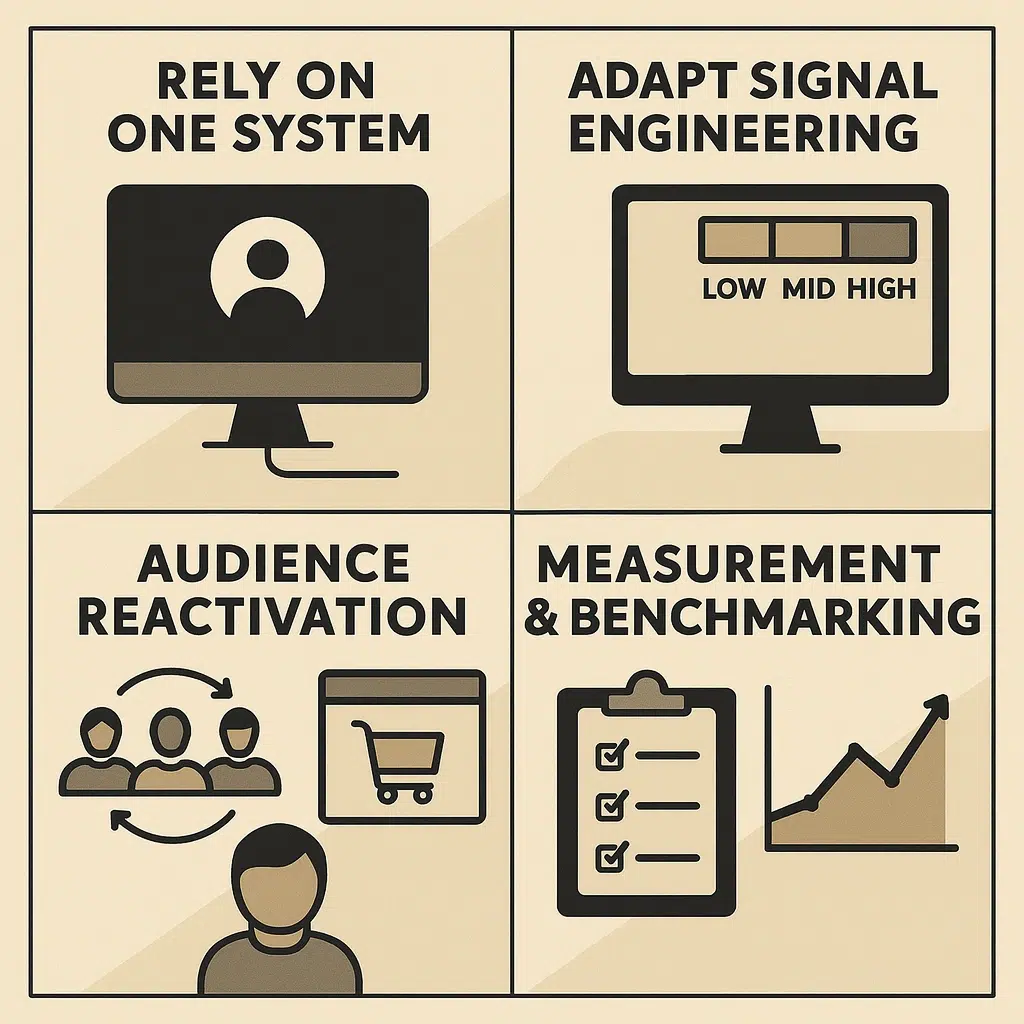
1. Power the Pixel with a Single Identity
Don’t let multiple systems fight over your funnel. If your top-funnel is powered by Shopify and your bottom-funnel by a one-click checkout, you’re breaking the chain of identity. Meta (or any ad platform) won’t be able to connect the dots, and your signals will collapse.
Rule: One system should power your entire funnel, stitched together with External IDs.
2. Adapt Signal Engineering
Always remember the “dog-dog” theory. Generic signals confuse the algorithm, while contextual signals train it smarter. Instead of one big “purchase” bucket, split it into low AOV, mid AOV, high AOV or into categories like men’s, women’s, kids’.
Rule: Don’t feed the algorithm “dog-dog.” Feed it “German Shepherd, Pomeranian, Labrador.”
3. Audience Reactivation
Engaged audiences are not people who liked your Instagram post. Engaged audiences are those who visited your website and showed intent. Focus on reactivating these groups: product viewers, repeat visitors, and cart abandoners. Treat them as high-intent pools you can nudge, not just broad followers on social media.
Rule: Your website is your real estate, not Meta’s. Build engagement there.
4. Measurement & Benchmarking
Never take platform-level ROAS at face value. Sure, it looks good in reports to bosses, but your real benchmarks must come from your own data. Keep KPIs limited (7–8 max), compare moving averages instead of week-on-week noise, and always decompose drops, is it AOV, CVR, or sessions?
Rule: Own your metrics. Don’t let platform vanity numbers drive your decisions.
Towards the end of the session, he said,
Future Belongs to Signal Engineers
Vishnu didn’t mince his words; the future belongs to signal engineers. Whoever controls the data, whoever decides how signals are structured and sent back to platforms like Meta or Google, will ultimately control performance.
He made it clear: marketers no longer need to “pray” for ROAS. In fact, platforms will end up depending on the quality of data we feed them. That’s the shift.
The thoughts of the Author
And honestly, sitting there in the hall as he wrapped up, I felt the weight of what he said. This wasn’t just theory; it was a call to arms for performance marketers like us. The way Vishnu tied in the struggles we all face, the stress of ROAS dropping, the panic of clients calling at midnight, and the constant pressure of proving numbers, it felt deeply real.
For me personally, this session wasn’t just about tactics. It was about mindset. A reminder that as marketers, we’re not at the mercy of platforms. We can take control, engineer signals, and actually flip the equation.
If I had to sum it up in one line: the summit gave me a new lens to look at marketing, not as a guessing game, but as a discipline where data, identity, and signals are the weapons of the top 3% of marketers.
And I walked away thinking, maybe it’s time we all start calling ourselves signal engineers.
If you want to implement signal engineering or one system to power up your campaigns, book a free demo with our experts.
But, if you are someone who likes to get your hands directly on things, start your setup for free today.
Will be sharing the exclusives in the community; no joining fee, totally free for today.
